Clouds: How Nature journaling clouds helps me let go of perfection
Last week I spent a few days in the mountains and enjoyed big beautiful skies. I took lots of photos because I wasn’t able to nature journal them right away in the field, like I often do.
A few days later when I returned home I revisited those clouds through my photos and my memory to fill some nature journal pages.
I had so much fun approaching this as practice drawing clouds. Instead of perfect, I focus on making progress with my drawing skills, noticing the variety of forms, and honing my discernment between cloud types.
But it didn’t always feel good to me to draw clouds.
Cloud avoidance
I used to hesitate drawing clouds because I didn’t like my drawings. I didn’t like the way they looked and began to think I just can’t draw clouds. And because I didn’t draw them much, there was little improvement in cloud drawing skill.
My inner critic was also pretty active in my head. It’s that internal voice that was pretty critical, judging all that I drew. But over the years, I’ve gotten able to quiet that voice, so that I can draw despite that voice or my less-than- ideal cloud drawing skills.
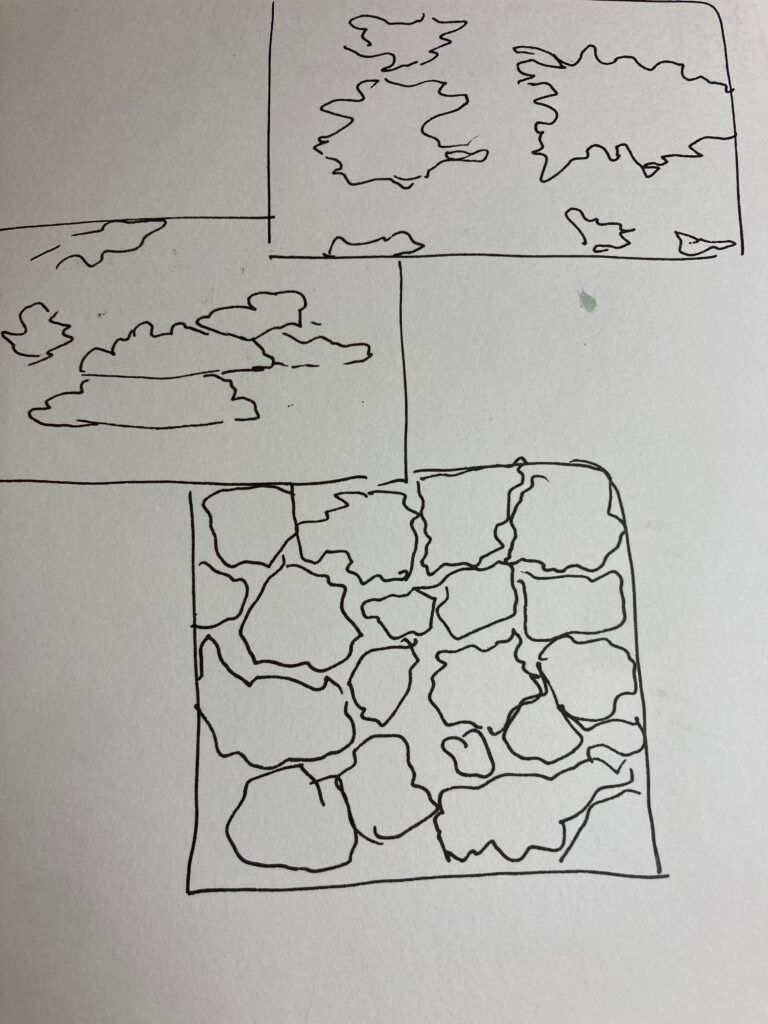
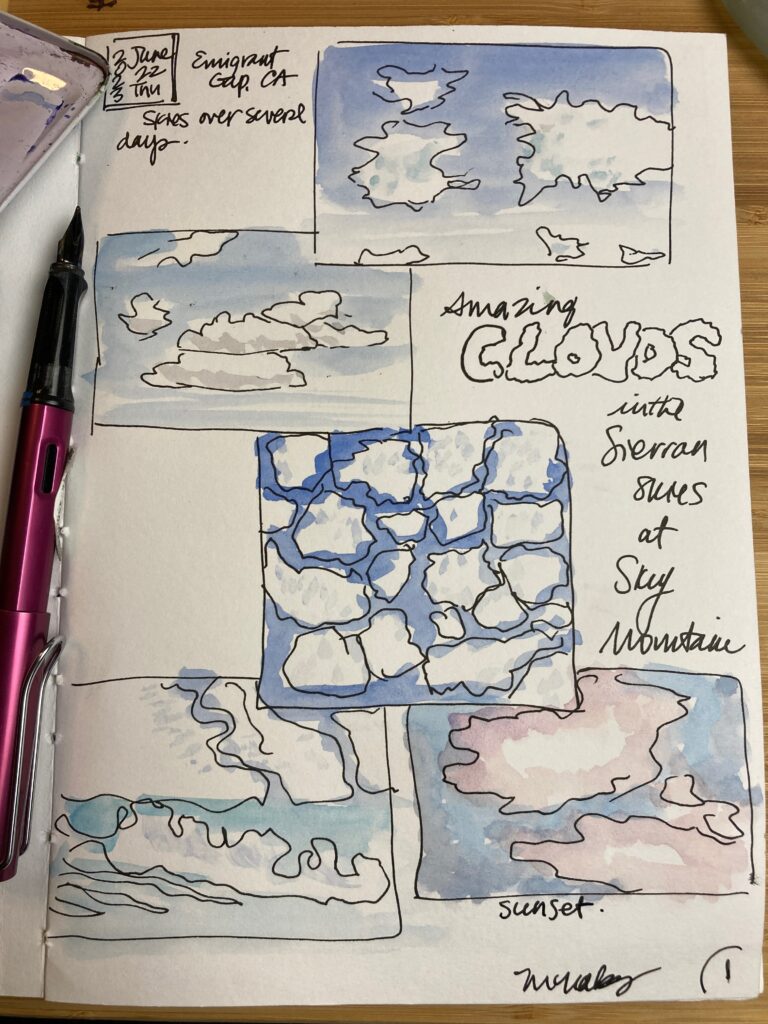
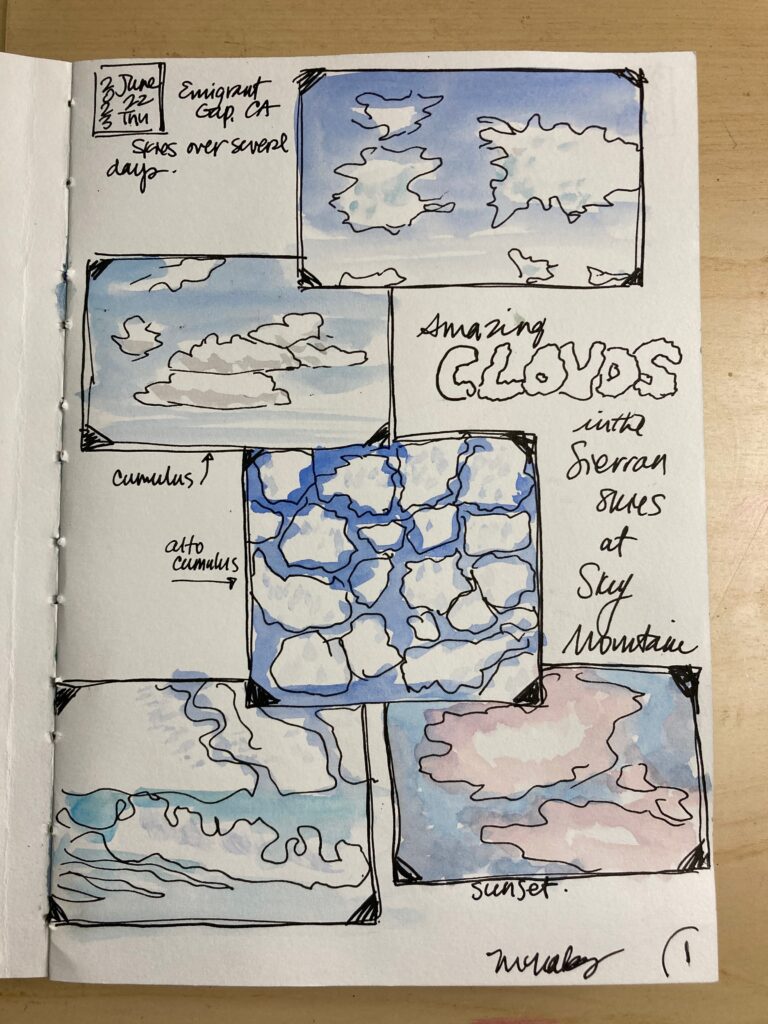
What’s my intention?
I find that reminding myself of my intention of nature journaling makes a difference in how I feel.
Am I doing this for art or for exploring nature?
We may have been conditioned to seeing drawing and painting as art– or believing the outcome should look “good”. Maybe others made comments on our drawings that we took in as criticism. Maybe that led to losing confidence, or developed self-consciousness about drawing.
But what is a “good” drawing anyway? Who’s judging the drawing? You? Me?
That’s where a shift in perspective about why we are drawing or journaling might be helpful. Am I trying to make a perfect painting or accurate illustration? Or am I instead, using drawing to practice seeing more details in nature, and record my experience?
So, is that my goal?

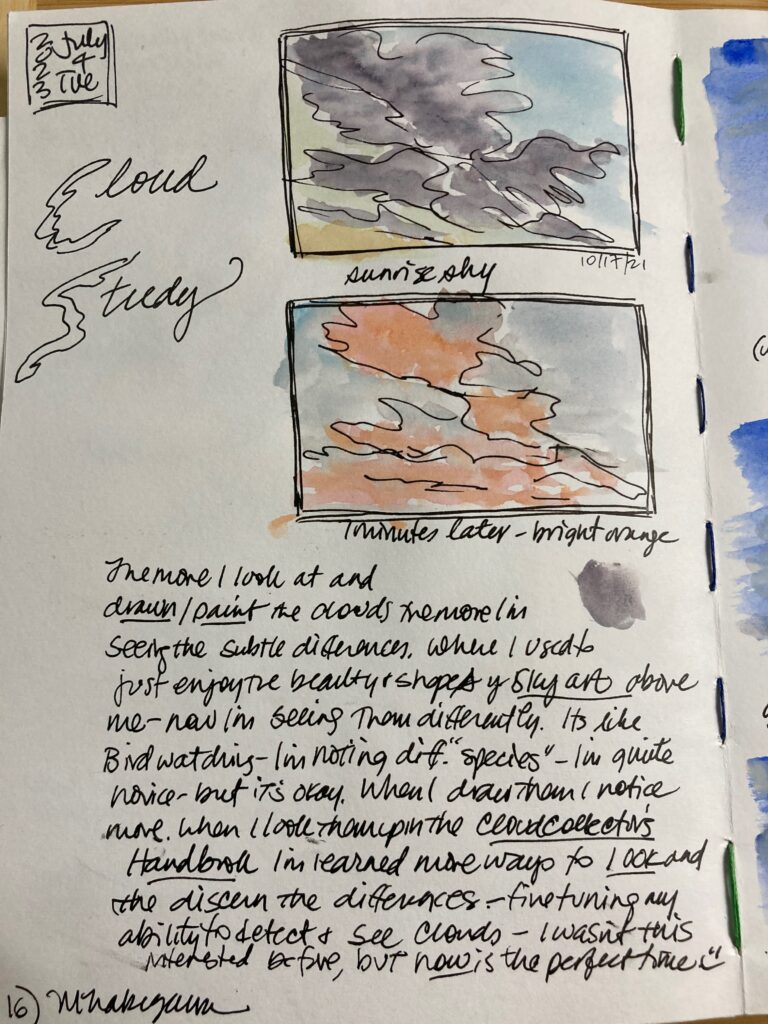
My intention with Nature journaling is to notice more nature. To facilitate being with and seeing nature. And to have a record of my nature experiences, as a memorable sensory scrapbook.
Drawing facilitates a deeper observation, and we see more nuanced details we might normally miss compared with not drawing. The more I draw, I’m training my eye and hand to work together– Drawing is just about hand- eye coordination.
So, ask yourself: “why am I nature journaling?”
Why I’m drawing clouds today
Today, I also just want to capture the joy I felt when seeing a variety of clouds. Not perfect paintings.
If I approach this as practice, and have fun experimenting, I gain so much! If I can reframe the idea that the drawings must look perfect, I can make progress in improving how I see and how I draw.
With every page, I’m moving ahead, expanding my skills. John Muir Laws talks about racking up “Pencil miles”. In this process, we could say pen miles, or cloud miles.
Let’s make Progress, not Perfection!
About perfection: Nothing in nature is perfectly, uniformly perfect- every leaf and branch and cloud is unique and individual. And, because the clouds are constantly moving, you can’t really compare your drawing to the real thing.
Let’s defuse this idea about Perfection, and practice making progress instead of perfection!!
Over time, as I’ve practiced, my drawings became better, which led to a deeper understanding of clouds, and surprisingly the inner critic’s voice became less noticeable.
Easy ways to break through the chatter of inner critic, and get drawing!
Here are a few ways that I quiet MY inner critic and get drawing!
1) Use Pen:
I like using a pen (fountain pen). But I know it’s kind of harsh to see the stark black lines on the page when actual clouds have a softness. But here’s why:
- I can’t erase, so I’m not agonizing over getting it “just right”.
- I must commit to the line and keep moving, so I’m saving time. Time to enjoy the sky
- This is one way to purposefully make it not realistic in my journal– tricks my brain momentarily “oh, there’s no way to get it perfect, so let’s not worry”
Practice different pen strokes to show texture. Experiment and play! Think of this as brain training– training your eye-brain-hand coordination!
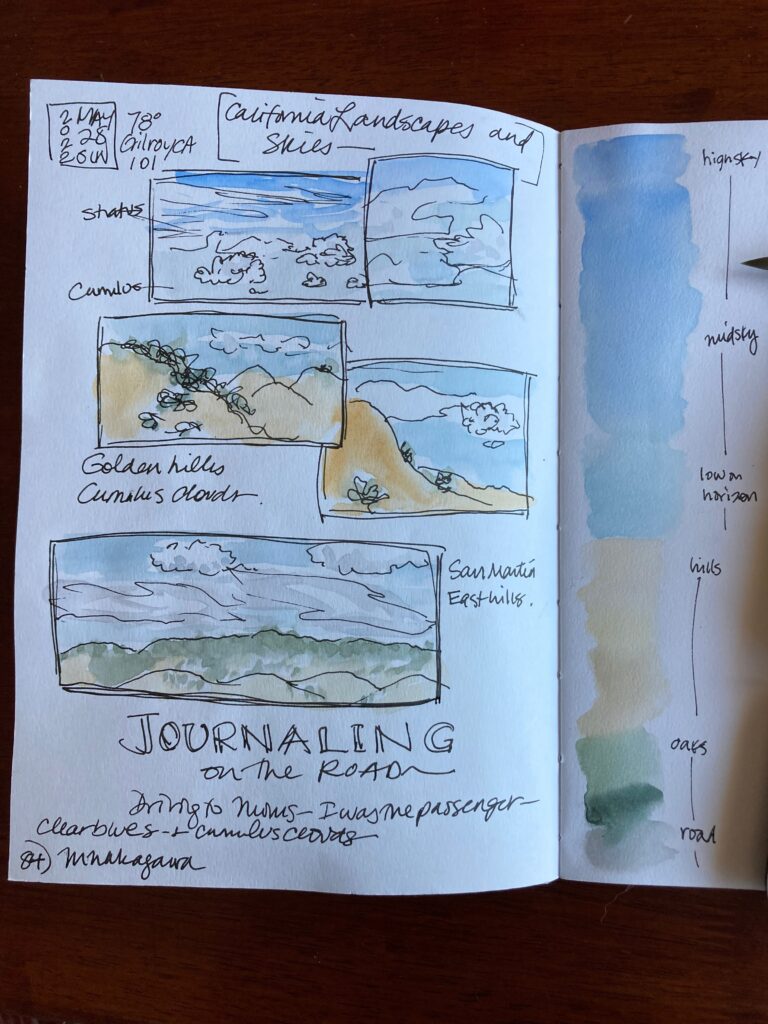
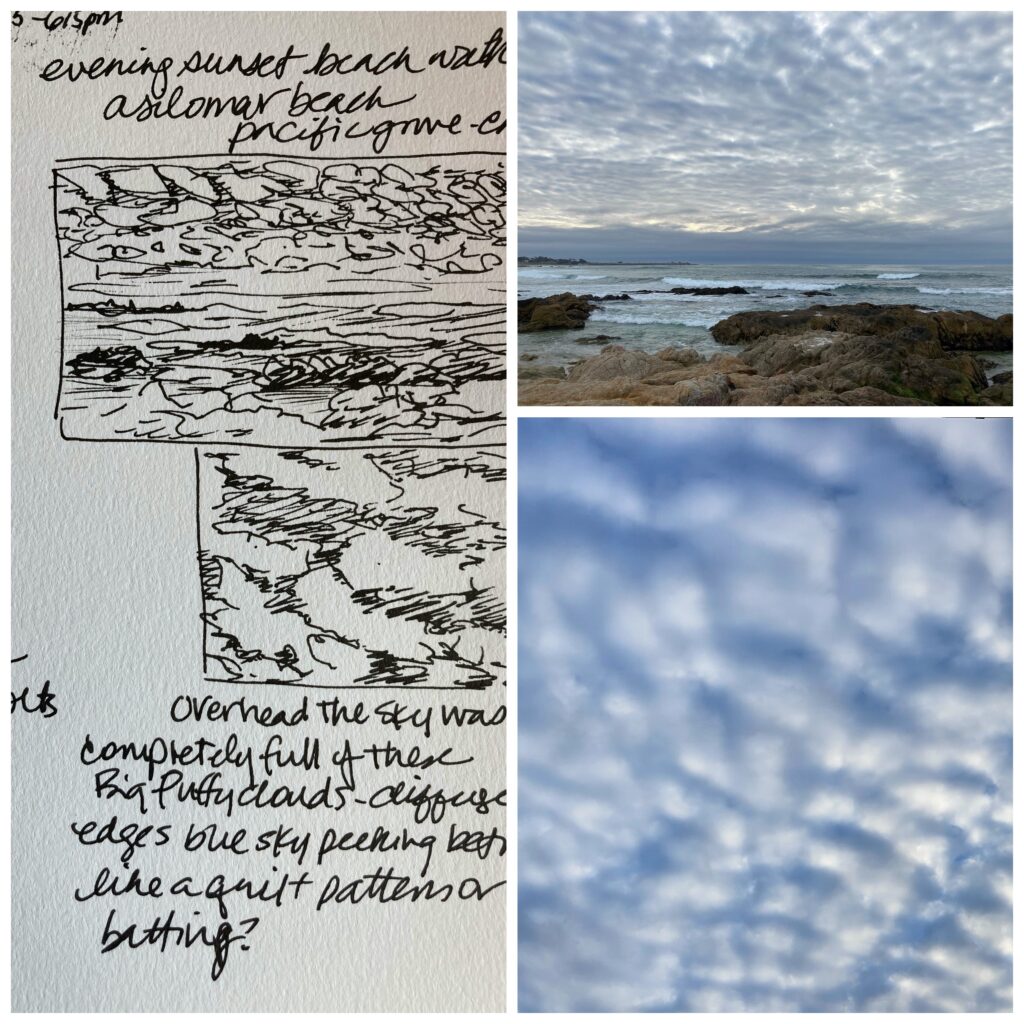
2) Draw small skyscapes:
I start with making a series of small boxes to frame the skies. This creates manageable sized drawings that are small, so low time commitment and prevents me from making a drawing that’s too big and overwhelming. And because it’s small, I can experiment with a technique- if I don’t like it, I can move on quickly.
You can make a grid of frames, or overlap them. You can make the frames thick or thin- add photo corners, or bottom weighted like Polaroid. Or do them comic style like Walt Mahoski.
3) Just outline the clouds
Simplify by focusing on the outline of clouds in pen with a loose contour drawing style– I’m not going for perfectly matched clouds–Have your eye follow the margins of each cloud, and your hand follows the line. Mimic the swirly or jagged or smooth edges.
4) Zoom in, create drawings of manageable size
Zoom in to a smaller area of clouds or sky to limit the amount of tedious sketching, especially if there’s lots of tiny clouds in the sky. This leaves more time to take in the moment, and observe more things about nature.
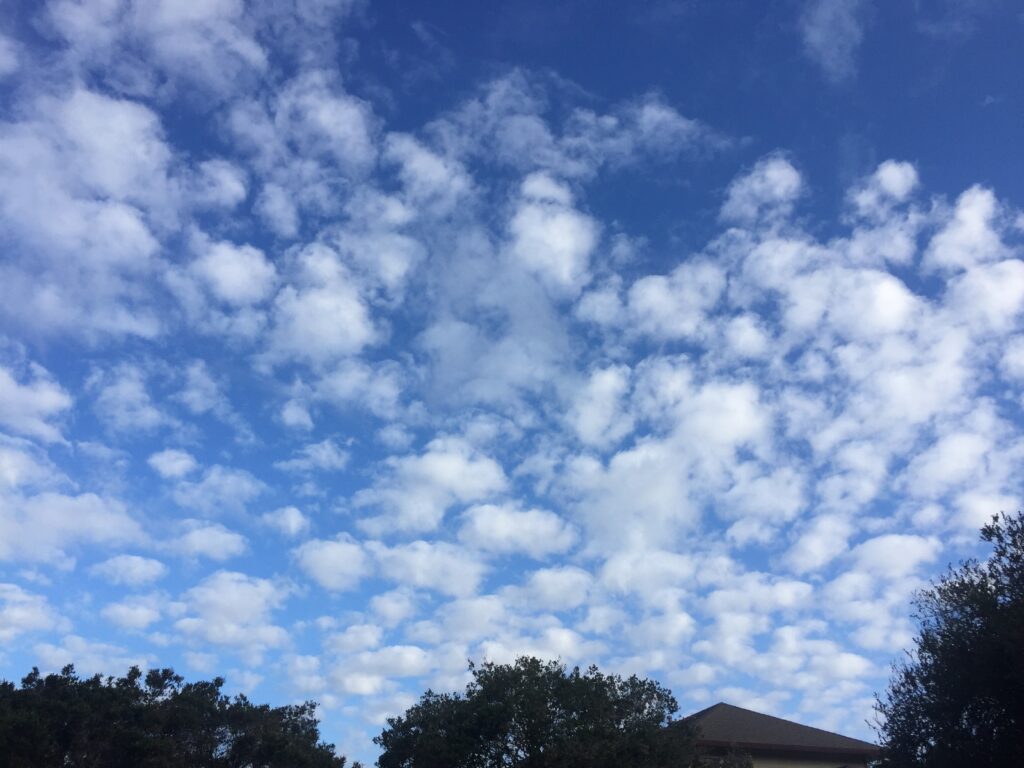
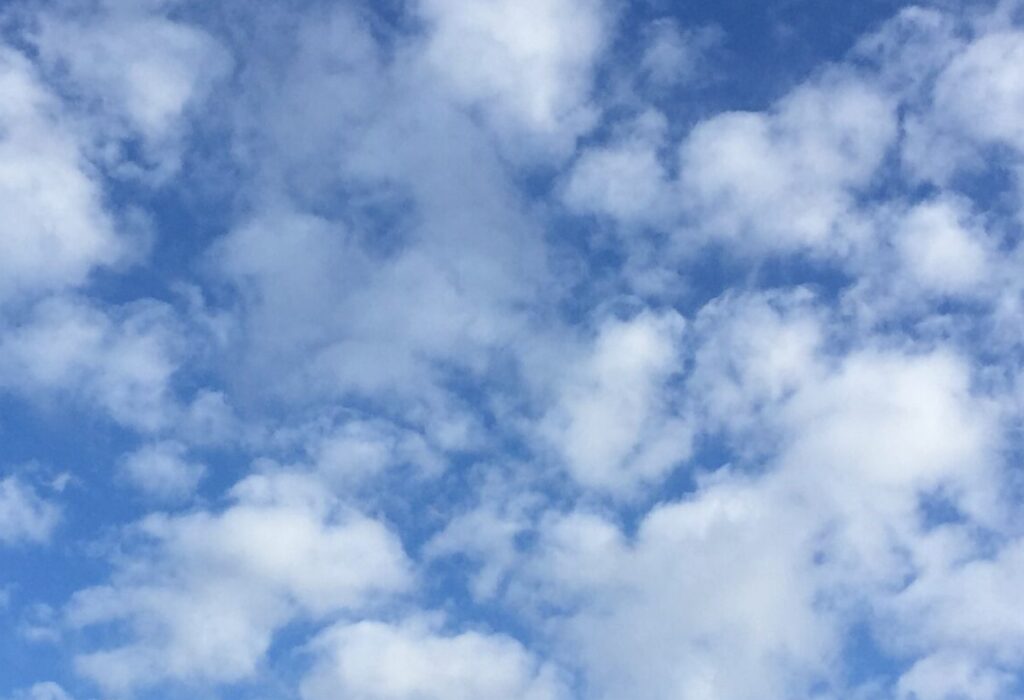
5) Four Directions: Capture the sky in a simple format
Much of the time, the sky looks different in various directions. Maybe you have the ocean or mountain range, or certain direction where the weather comes from. Create a grid or chart of the sky with the 4 cardinal directions (North, East, South, West). This makes it more manageable to draw and you notice how the clouds look different based on direction and distance.
- Divide your page in 4 parts by drawing an X or a large Plus sign in the center of your page, and extending the four lines out the the edge of your page.
- Choose just one section of cloud/sky to hihglight in each North, East, South and West.
- This is great because it challenges you to identify directions and learn more about your PLACE: try to do this without your phone or compass.
How do you know East or West?
Do you know what direction the sun comes up at this location?
What time is it now and where is the sun currently?
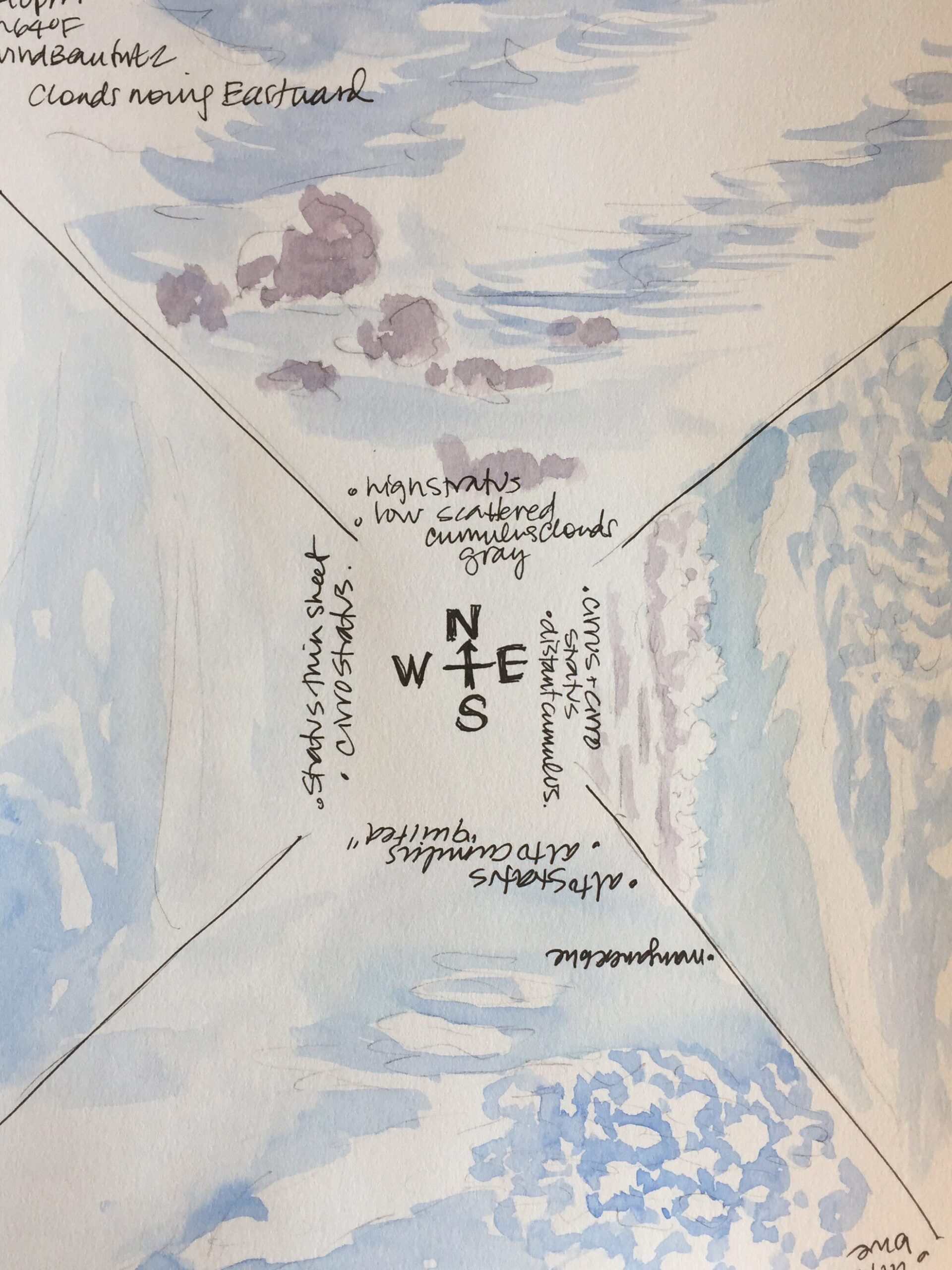
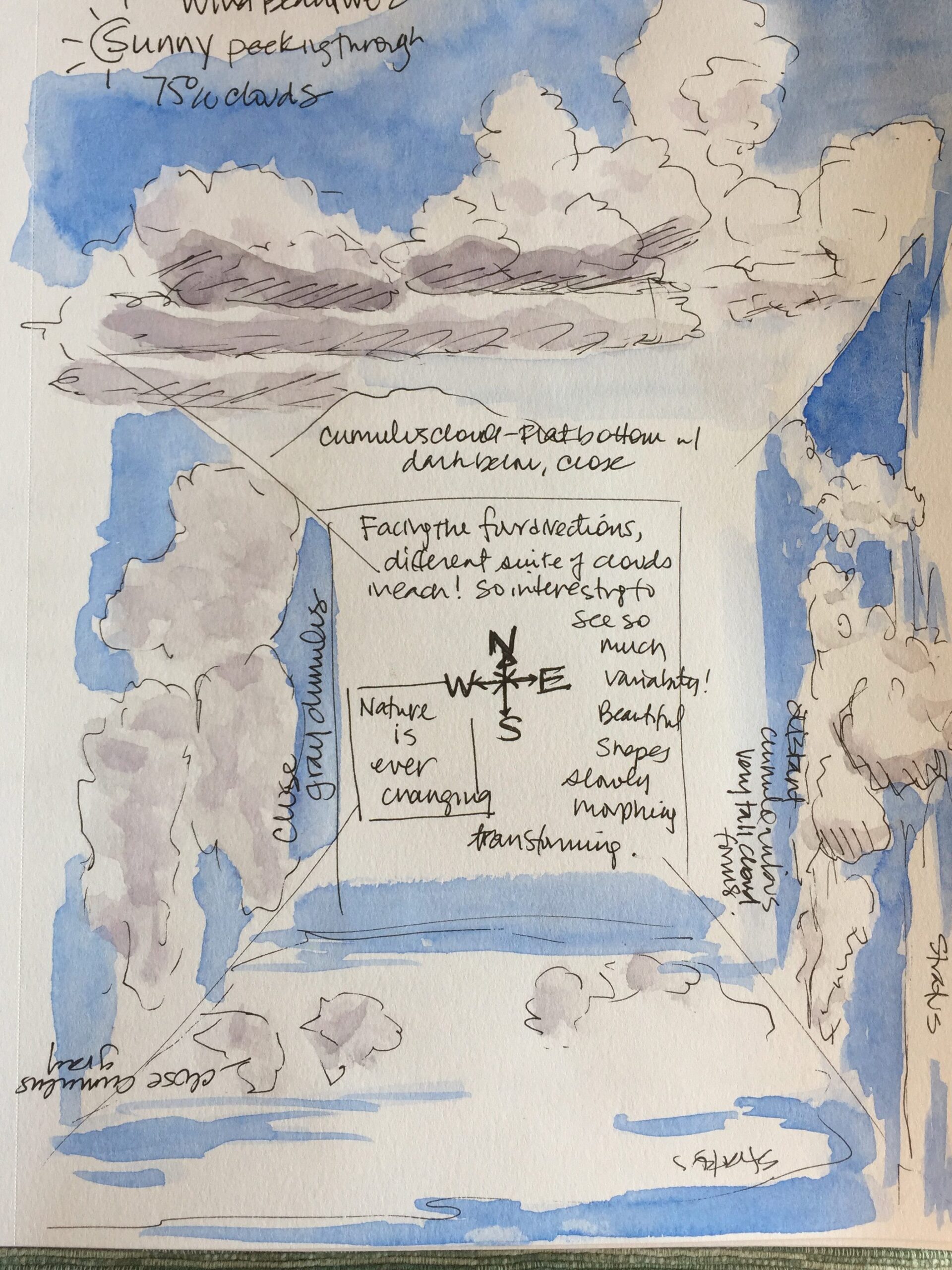
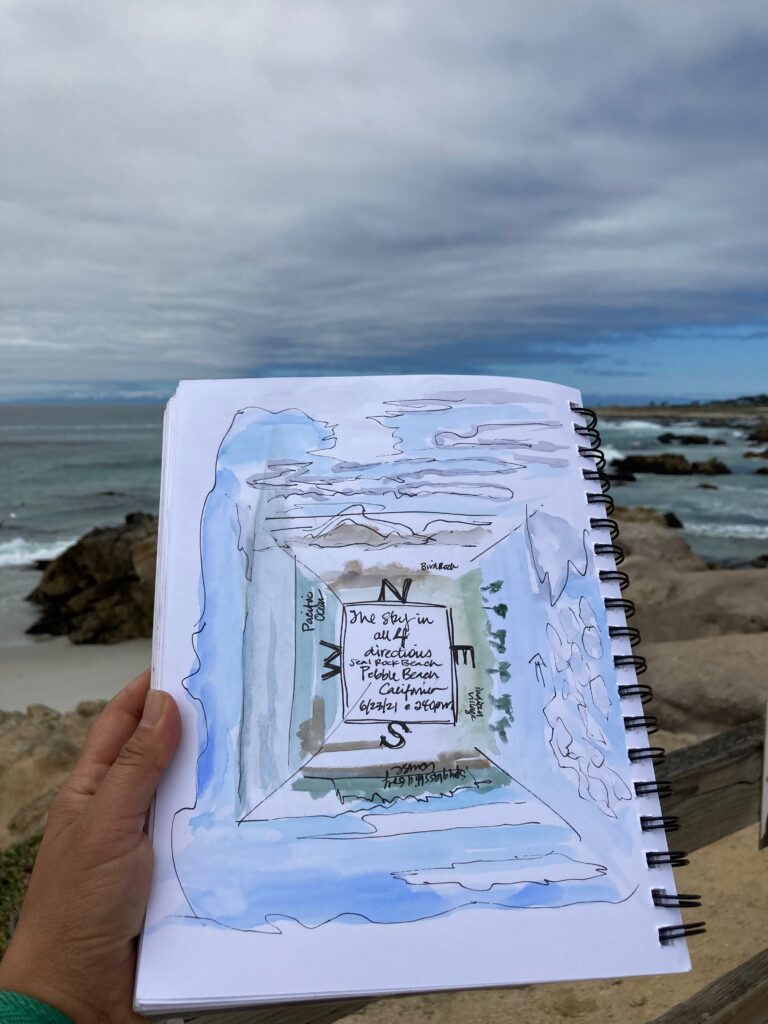
There’s always room for growth
If you have a learner’s or Beginner’s mind, you’ll have room for growth and learning! Inspired by the zen tradition,
“If your mind is empty, it is always ready for anything, it is open to everything. In the beginner’s mind there are many possibilities, but in the expert’s mind there are few.”
Shunryu Suzuki, Zen Buddhist monk
Some things I’ve learned about clouds –just observing and by drawing them:
Blue gradient:
Overhead, the sky is a darker blue (eg: cobalt, or ultramarine) and as you look to horizon, fading to pale blue (eg: manganese blue hue). Some of you may have known this for years, but for me, I didn’t really notice until I tried painting the sky. Later on, because this piqued my interest, I read in The Lost Art of reading Natures signs, by Tristan Gooley, about WHY this happens. I’ll leave you to ponder, and look it up later…
Cloud colors:
Clouds are NOT all white, even though as young people we might have always drawn them as puffy white blobs. I see shadow and shading– gray, lavender-gray. And at sunset/sunrise a rainbow of colors in clouds as well as the sky : Pink, magenta, coral, yellows, oranges and purples!
Vertical Layers:
In my cloud watching, I’ve noticed that there are various layers in altitude. The puffy cumulus clouds are lower and closer to me. I see these move faster than the higher elevation clouds that might have a different texture.
As I have come to notice, appreciate and be curious about these altitude layers, did I dive into researching for fun with the book, The Cloud Collector’s Handbook by Gavin Pretor-Pinney.
Sometimes I can see the layers moving at different speeds, and I can note that in my journal, with the speed and direction (estimates are fine, you don’t need to have exact measurements for fun).
Expand your learning at your own pace
When nature journaling clouds there are no “HAVE-TO-DO”s. You can include whatever information you want with what you see in the sky.
You can use watercolor or not.
Big skyscapes or small thumbnail sketches.
Realistic paintings or sketches.
Lists of cloud inspired questions, possible answers, research or not.
I’m still a beginner when it comes to having a strong identification-based knowledge of clouds. But its okay with me, because my intention with nature journaling clouds most times, is appreciating beauty and marveling at Nature’s sky paintings. A little at a time, I increase ecological knowledge as my interest draws me there.
Invitation for you:
- Now its your turn. Pull out your journal and pen.
- Go through your photos of the clouds in the sky. Or look online or Take some photos yourself.
- I find that photos might be easier to start with, because they are NOT moving, and they are flat 2-dimensional (and therefore, easier to draw)
- Draw a few boxes and start drawing your clouds- with the intention to notice the variety- and have fun… This is not a lesson on drawing perfect clouds.
- Try a different tool/medium
- If you use watercolor, try colored pencil
- If you use pencil, give pen a try! (fountain, ball point, brush tip, etc)
- Try colored paper with white pencil or white paint
Remember to go for progress instead of perfection.
What’s important is that you notice, and you capture the moment- rather than perfection. What does it make you feel? Do the clouds remind you of anything?
Let me know what you discover. What helps you loosen up? What helps you to quiet the inner critic?
You can share with us in an online community space I’ve set up for us here on Circle. Its not social media, and its private, nourishing place for us to connect, share, learn, and grow.
Enjoy the clouds in the sky!
“Wherever you are, you are one with the clouds and one with the sun and the stars you see. You are one with everything. That is more true than I can say, and more true than you can hear.”
Shunryu Suzuki, Zen Buddhist Monk, 1904-1971